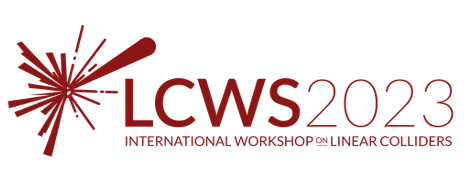Conveners
Accelerator: Superconducting RF
- Sergey Belomestnykh (Fermilab)
- Mattia Checchin (SLAC)
- Yasuchika Yamamoto (KEK)
Accelerator: Superconducting RF
- Mattia Checchin (SLAC)
- Sergey Belomestnykh (Fermilab)
- Yasuchika Yamamoto (KEK)
KEK is starting the 5-year plan related to SRF for ILC. The main goal is the production and evaluation of prototype cryomodule including cavities with high-Q/high-G, input power couplers, frequency tuners, magnetic shields, superconducting quadrupole magnet and cold BPM, etc. Since the ILC is a global project, this five-year plan also has to be carried out under global collaboration. KEK...
Installation of a vertical electropolishing (VEP) system for surface treatment of Nb cavities was just completed at KEK and started the test operation in December 2022. Although the horizontal EP (HEP) system has already been in operation for nearly 15 years at KEK, VEP system was adopted to process 9-cell Nb cavities, because of the simpler operational processes and the higher work safety. We...
Today, Superconducting Radio Frequency technology is based on bulk niobium and is now reaching its intrinsic limitation. Increasing the performance of SRF cavities while reducing manufacturing and operating costs poses real technological challenges. At CEA, we pursue a multiscale material functionalization approach compatible with mass production without performance degradation. The first...
This talk will discuss Fermilab’s recent progress in the surface engineering of superconducting radio-frequency (SRF) cavities geared toward producing simultaneously high quality factors and high accelerating gradients in cryomodules. We investigate possible microscopic mechanisms that drive improved performance by carrying out sequential RF tests on cavities subjected to a variety of surface...
It has been a fundamental requirement to realize high-performance superconducting RF cavities with highly cos-effective production. New, medium grain (MG) niobium (Nb) material and clean disc production has been realized with a cos-effective production process with (i) forging pure Nb ingot, (ii) annealing, and (ii) direct slicing. It has provided very clean surface, without rolling process...
Utilization of a Superconducting Travelling Wave Acceleration (STWA) structure with small phase advance per cell for future high energy linear colliders such as ILCs may provide an accelerating gradient 1.2–1.4 times larger than a standing wave structure. In the present paper, the status of development of high gradient STWA for collider application is presented.
One of the critical issue to fabricate ILC-type cryomodule is compliance with the high pressure gas regulation(HPGR) in Japan. Currently most of our effort against HPGR is devoted for the Nb SRF cavity fabrication. Pre-assessment application form is under preparation, which is based on the results of mechanical tests of material and stress calculation of the cavity. Our strategy against HPGR...
High Gradient Cryomodule (HGC) is a collaborative effort to demonstrate cryomodule gradients ~10-20% higher than ILC TDR. Applications of high gradient SRF include ILC, Fermilab Accelerator Complex Evolution (ACE), muon collider. In this presentation we report on progress towards assembly and testing HGC.
LCLS-II-HE is an ongoing upgrade project to the superconducting accelerator complex at SLAC. 23 new LCLS-II-style cryomodules are being built at partner laboratories Fermilab and Jefferson Lab. 192 new 9-cell niobium cavities prepared with the "2/0" nitrogen doping recipe are being procured from an industrial SRF cavity supplier. In this report we present an update on the status of acceptance...
Plasma processing can be used to mitigate hydrocarbon-related field emission in SRF cavities in situ in cryomodules. We developed plasma cleaning for LCLS-II 1.3GHz N-doped cavities and we successfully applied it to the LCLS-II High Energy verification cryomodule (vCM). This test demonstrated that plasma processing can be a valuable tool to mitigate both field emission and multipacting in situ...
The International Liner Collider requires a crabbing system to increase the luminosity of the colliding electron bunches. There are several frequency options proposed for the crabbing cavity design. We have designed a 1.3 GHz compact rf-dipole crabbing cavity to compensate for the luminosity degradation due to large crossing angle. The rf-dipole design has been selected as one of the two...



